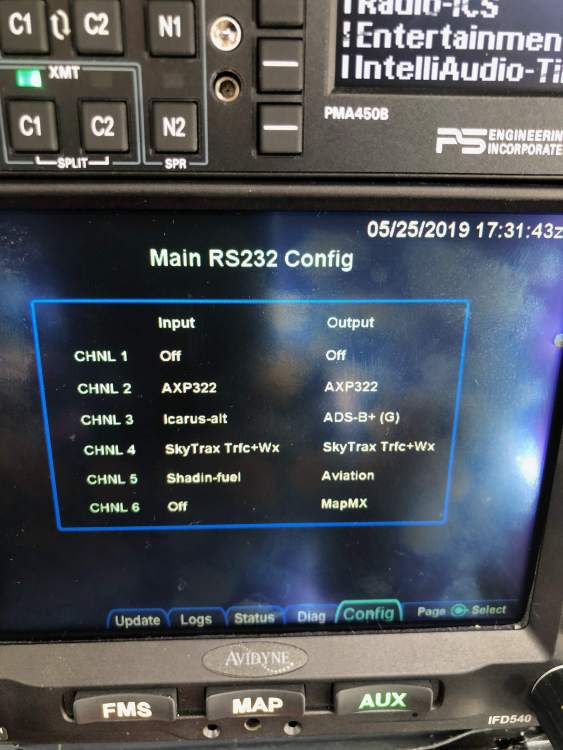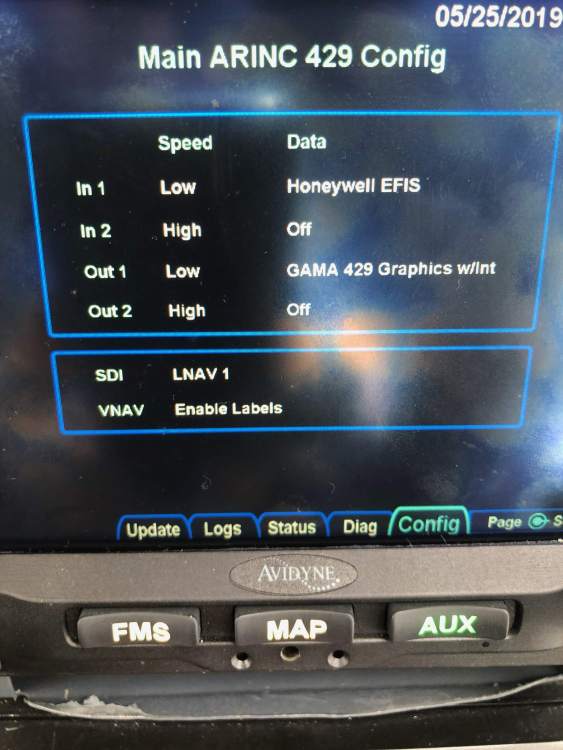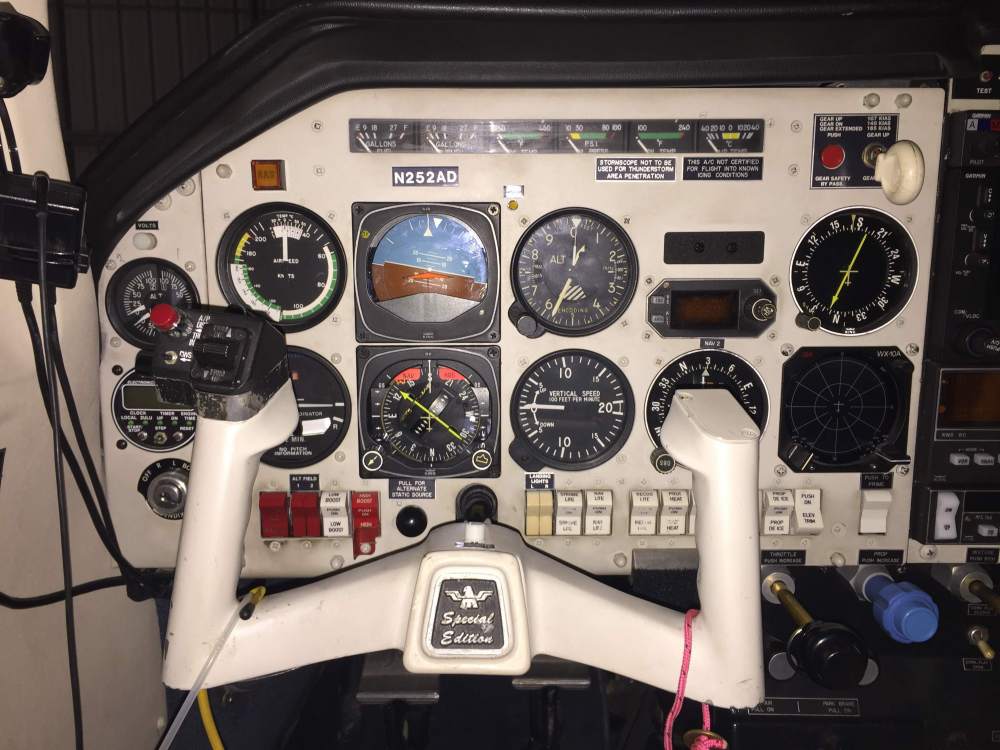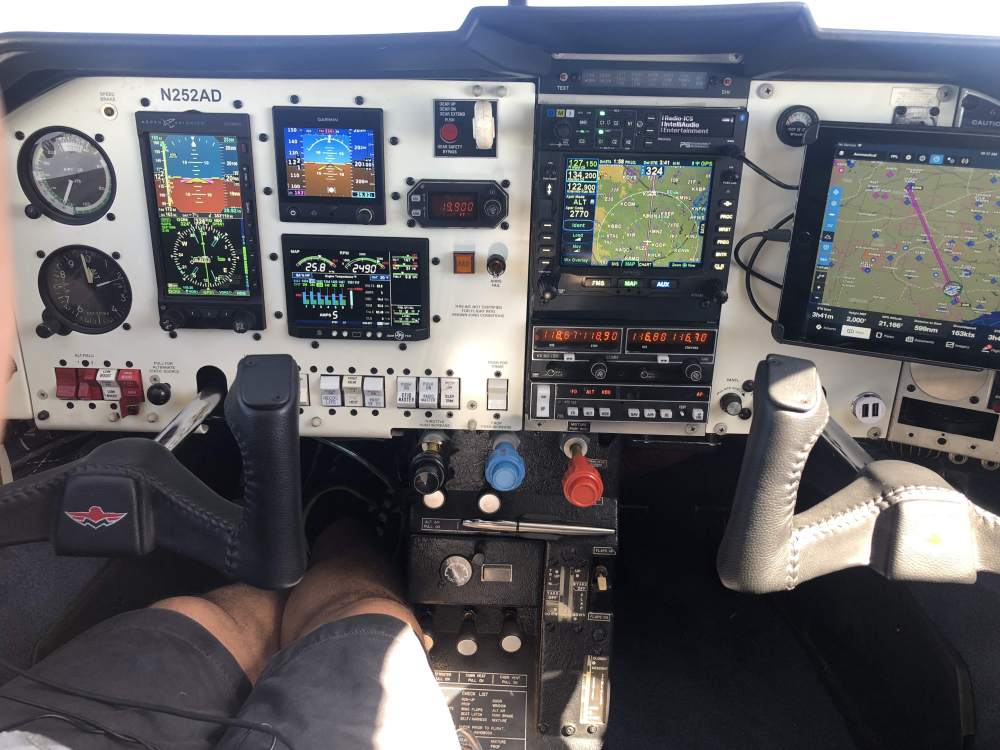
gsxrpilot
Basic Member-
Posts
9,055 -
Joined
-
Last visited
-
Days Won
315
Content Type
Profiles
Forums
Blogs
Gallery
Downloads
Media Demo
Events
Everything posted by gsxrpilot
-
Gear collapse at Paine field - Everyone ok
gsxrpilot replied to ChrisV's topic in General Mooney Talk
That sure looks like an improperly adjusted over-center on that gear. When the over-center is done right, there is no load on the extension mechanism. But if done wrong, it's a lot of weight to hold and can easily collapse. Insert @carusoam normal disclaimer here... -
I can't argue that! I need a ski tube.
-
I'll agree and disagree with @jrwilson. I have a 252 which is like a 231 only better but I still like the M20J for any flight below 10K feet. I LOVE my 252 and wouldn't trade it for anything short of an MU2. But if I were in your shoes... in Illinois, I'd have an M20J.
-
New Aspen E5 - In-Flight Crash and Reset
gsxrpilot replied to bd95r's topic in Avionics/Panel Discussion
Here is my config. I have the Aspen E1000 and the IFD540 (so not exactly the same) but the Aspen (Honeywell EFIS) is on the ARINC 429. -
I'd be all over that deal! And if you're ever in Denver... We were originally planning to do a dinner flight. But around the holidays both family demands and his work schedule (SWA), have most evenings tied up. But no one cares what we do between 4am and 10am. So we'll do the night leg first, eat breakfast, and the day leg coming home.
-
Yeah, if solo had been an option, I'd have qualified already. But there's been no other reason to do such a flight with a CFI. Thankfully my younger brother is a CFI and his fee will be picking up the tab on his breakfast
-
Check the PTS for the Commercial. They're in there. FAA-S-8081-12C
-
Those just have to be done on the CheckRide.
-
You would think, right! But the conditions were too specific... Solo or with CFI (usually my wife is with me) 10 take offs (I usually take off in the daytime and land after dark on a typical trip) 10 landings (got those but not all qualify) VFR (some of mine were IFR so didn't count) Traffic Pattern (even most of my VFR nighttime landings were via an instrument approach. It's just easier to dial up the ILS when landing at an unfamiliar field after dark) Operating control tower (My home field until I recently moved to Denver, is uncontrolled. So none of my night work there for currency counted. And I was at KHYI for a little over a year, but the control tower closes at 8pm so it's almost never operational after dark) 5 hours (often times arriving after dark, only the last .2 hours count as night) Out of 1300 hours I found 2 takeoffs and 6 landings for a total of 4.2 hours that qualified. I was surprised myself that I couldn't find the required experience already in my log book.
-
Gear collapse at Paine field - Everyone ok
gsxrpilot replied to ChrisV's topic in General Mooney Talk
Properly set pre-load on the gear makes this virtually impossible. I know the MSC that I work with for maintenance, not only knows how to check and set the pre-load properly, but also understands the consequences of not setting it correctly. -
Holy Cow, It's finally time for my new Panel !!
gsxrpilot replied to TargetDriver's topic in Avionics/Panel Discussion
No, they are attached with a screw from the bottom. There might be some glue involved as well. I sent the original yokes to Hector and they came back like this. You can choose the color of the stitching if you don't like the factory color. Here's what they looked like before. -
I'm getting just a little bit emotional seeing that picture myself. And I never had the pleasure of knowing Steve. Tom, you should take comfort in the fact that Steve had a very wonderful life, and not the least of which was having you for a best friend.
-
14 CFR § 61.129 - Aeronautical experience This basically says the same thing. (4) Ten hours of solo flight time in a single engine airplane or 10 hours of flight time performing the duties of pilot in command in a single engine airplane with an authorized instructor on board (either of which may be credited towards the flight time requirement under paragraph (a)(2) of this section), on the areas of operation listed under § 61.127(b)(1) that include - (i) One cross-country flight of not less than 300 nautical miles total distance, with landings at a minimum of three points, one of which is a straight-line distance of at least 250 nautical miles from the original departure point. However, if this requirement is being met in Hawaii, the longest segment need only have a straight-line distance of at least 150 nautical miles; and (ii) 5 hours in night VFR conditions with 10 takeoffs and 10 landings (with each landing involving a flight in the traffic pattern) at an airport with an operating control tower.
-
You are correct for night currency. But this was not for night currency, just the commercial flight experience requirement. I double checked with a local flight school before I went out to do this, just to be sure.
-
What part of the country?
-
Holy Cow, It's finally time for my new Panel !!
gsxrpilot replied to TargetDriver's topic in Avionics/Panel Discussion
Yep! Hector's done the yokes for both of my Mooneys. He's the best there is. -
Holy Cow, It's finally time for my new Panel !!
gsxrpilot replied to TargetDriver's topic in Avionics/Panel Discussion
-
Instead of buying a FS210, swap out your 430 for an IFD440. You can do the swap yourself, $0 install cost, and the IFD440 includes all the functionality of the FS210 built in for free.
-
There is a somewhat famous and very well traveled Mooney based at Linden. @201er is there.
-
I'm wanting to get the Commercial and there are a few requirements that I haven't met yet. One of them is 10 night take off's and landings, using the traffic pattern, at a towered field, with an operating control tower, solo. A very specific requirement. And with over 1300 hours in the log book, I should be able to total them up. Nope, I could only come up with 6 Landings and 2 Take off's that qualify. I've almost always maintained night currency. But that's from years of being based at Smithville, TX (84R) no tower. And I was even at San Marcos for a short while, but the tower closes at 8pm every night. So most of the year you can't even get a night flight in while the tower's operational. So with the winter storm having moved on to Kansas, and a clear, cold, early night here in Denver, it was time to go log the night activity. I did 10 take off's and the corresponding 10 landings, all in the pattern, all talking to the control tower. 5 of them were 30R with Right traffic and 5 were 30L with Left traffic. All but the last one were No Flap, Touch and Goes. The gear worked as expected and she rolled back to the hangar under her own power after the last one. Actually, No Flap T&G's are maybe cheating a bit. The proper trim position on landing is exactly where it should be for take off as well. Next I need a VFR Day and VFR Night Cross country with a CFI on board. 2 hours or 100 miles. My brother and I plan to launch about 3am on Tuesday morning and slow fly our way across Kansas to get breakfast (Night). Then we'll fly home (Day) The last one is a 300 mile cross country, solo, with three landings, one being at least 250 miles from the start. I've got 900+ hours of cross country time in the Mooney. But only one flight met this qualification. Thankfully, that's enough. The problem is that most of my long cross countries, have my wife along. The other problem is, in the Mooney, I can get from just about any A to any B in the country with only a single fuel stop. So I never make two stops. There is a long list of flights well over 1500 miles, but none of them with more than two landings. One fuel stop and the destination. But I did find one single flight in the log book that qualified. It was a flight to Burning Man. I was solo. The plan was to go Austin to Vegas to Napa. But I had a last minute work conference call that popped up. So I landed in Burnett, TX to take the call. That gave me the extra stop. It's been a fun exercise going back through the log book reliving many of the flights.
- 54 replies
-
- 10
-

-

-
I'd install the EA100 and just have the KFC100 run off of the Aspen full time. You'll still need either a backup AI or a second Aspen which will act as the second AI. Solid state AHRS will be more reliable than vacuum driven spinning things. I have an Aspen/EA100 and a G5 (backup). The Aspen drives the KFC100. I removed the standby vacuum pump out of the tail and the engine driven pump is only connected to my speed brakes. So I'm not dependent on vacuum for anything.
-
Yeah, that's what I meant to say. Thanks.
-
Mooney down in CT - N53CP
gsxrpilot replied to TTaylor's topic in Mooney Safety & Accident Discussion
I never used the boost pump when running a tank dry with my carbureted M20C. And I've never needed the boost pump with my 252 when running a tank dry, as long as I was below 15K feet or so. But when running a tank dry in the flight levels, the POH and my experience, calls for the High Boost pump on. And it takes about 10 seconds (an ETERNITY) at that altitude to restart even with the boost pump on. -
Holy Cow, It's finally time for my new Panel !!
gsxrpilot replied to TargetDriver's topic in Avionics/Panel Discussion
I went through a similar situation. I didn't have the MX170 but had a combination of separate coms and nav units. I got rid of the old stuff and replaced it with a KX165 off of Barnstormers. It was thinner than the other combination of radios, and as it's only the secondary nav/com to the IFD540, I didn't want to spend thousands. It works well enough, allowed me to fit everything in the center stack. I'm happy with the decision. -
I went through this very same exercise in 2014. I had a $50K budget and was looking for an E. The E is the original Hot Rod Mooney. It can, with the right speed mods, be every bit as fast as a J. And since most of us use Mooneys as 2 place airplanes, (with the option for 4 people on short $100 hamburger runs), the E is a good size as well. But even back in 2014 I couldn't find a ready to fly, E for $50K. An F is nice if you need to haul a load. It's got a little more room, and typically has the best useful load of any of the vintage Mooneys. But it's not as quick as an E or a J. I took my $50K and went looking for an E. But the only E's available for that money, had original panels (old/tired/scatter shot arrangement), didn't have an autopilot or GPS, a tired engine, and needed work to bring up to something I'd really enjoy flying and traveling in. But back then, $50K would buy a very nice C. And since I'm a pilot and not a builder/mechanic, I opted to buy the best C I could find for my budget. I flew that C for two years and 400 trouble free hours. It was fast, with all the available speed mods, nice paint and interior, Stec 30/altitude hold autopilot, 530W GPS, ADSB, etc, etc, etc. I still always wished it was an E. But a nice flying C was better for me than an E that needed work. I don't think $50K would buy a similar C today, but it for sure won't buy an E or F.




